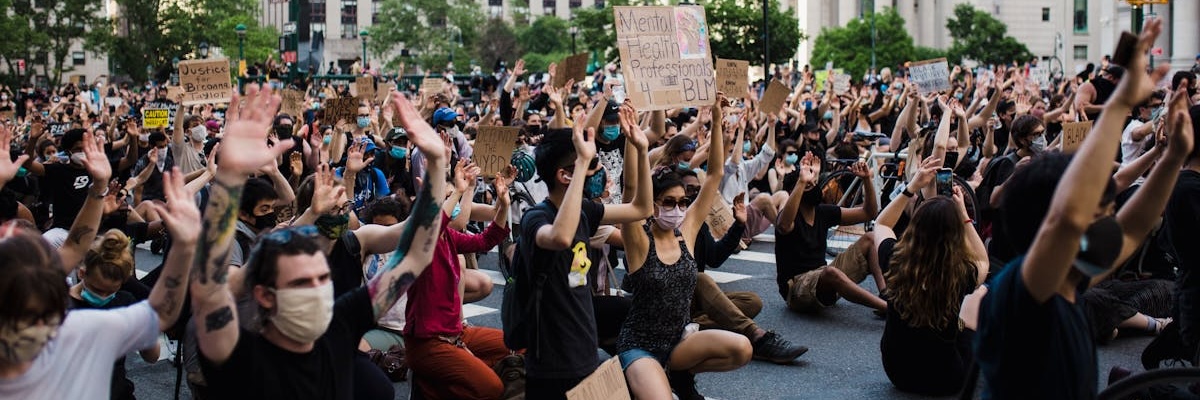Discussions around racism and prejudice have become increasingly prevalent, sparking important conversations about discrimination and bias. While these terms are often used interchangeably, it is crucial to understand the nuanced differences between them. In this article, we will deep dive into the definitions of racism and prejudice, explore real-life examples, examine their impacts, and ultimately, discuss how we can actively work towards counteracting these harmful ideologies. Join us as we navigate the complex terrain of racism and prejudice, shedding light on key distinctions and strategies for fostering a more inclusive and empathetic world.
Understanding the Basics: Definitions of Racism and Prejudice
To gain a comprehensive understanding of racism and prejudice, it is essential to start with their fundamental definitions. While both concepts involve negative attitudes and discrimination towards certain groups, they differ in their scope and underlying ideologies.
Defining Prejudice
Prejudice refers to preconceived opinions or attitudes held towards individuals or groups based on their perceived characteristics, such as race, ethnicity, religion, gender, or social class. It involves making judgments without sufficient knowledge, often resulting in biased assumptions and stereotypes. Prejudice can manifest in various forms, including verbal expressions, discriminatory actions, or even unconscious biases.
Understanding the Concept of Prejudice
Prejudice is rooted in cognitive processes that categorize and simplify information about others. These cognitive shortcuts, known as stereotypes, can lead to unfair judgments and negative evaluations. Prejudice can be influenced by societal norms, cultural upbringing, personal experiences, and media portrayals. It is important to note that prejudice can exist even without explicit hatred or animosity towards a particular group.
Examples of Prejudice
Examples of prejudice can be found in numerous contexts and settings. For instance, racial prejudice may manifest as racial profiling by law enforcement agencies, bias in hiring practices, or discriminatory treatment in various social settings. Similarly, prejudice based on gender can lead to sexist attitudes, unequal pay, or limited opportunities for women in certain professions. Religious prejudice may result in discrimination, hate crimes, or exclusionary policies targeting specific religious groups.
Impacts of Prejudice
Prejudice can have profound impacts on individuals and communities. It perpetuates social inequality, marginalizes certain groups, and hinders societal progress. Those who experience prejudice may suffer from feelings of inferiority, exclusion, and reduced access to opportunities. In extreme cases, it can lead to psychological distress, violence, and societal divisions.
Understanding the nature and consequences of prejudice is crucial in dismantling its harmful effects. By recognizing and challenging our own biases, we can begin to foster a more inclusive and equitable society.
Defining Prejudice
Prejudice is a complex and multifaceted concept that plays a significant role in shaping attitudes, behaviors, and social interactions. In this section, we will delve deeper into the definition of prejudice, its underlying mechanisms, and the various forms it can take.
Understanding the Concept of Prejudice
Prejudice can be defined as a preconceived judgment or opinion formed about an individual or a group without sufficient evidence or knowledge. It involves making assumptions based on limited information and relying on stereotypes rather than engaging in a fair and unbiased assessment. Prejudice often stems from the human tendency to categorize and simplify information, which can lead to biased beliefs and discriminatory attitudes.
The Origins of Prejudice
Prejudice can arise from a variety of sources, including cultural, social, and psychological factors. Cultural influences, such as societal norms and traditions, can shape individuals’ perceptions and attitudes towards certain groups. Socialization processes, including upbringing, education, and media exposure, can also contribute to the development of prejudiced beliefs. Additionally, psychological factors like cognitive biases and the need for social identity can influence the formation of prejudice.
Forms of Prejudice
Prejudice can manifest in different forms, targeting various aspects of human identity. Some common forms of prejudice include:
- Racial Prejudice: Bias and discrimination based on race or ethnicity.
- Gender Prejudice: Discrimination and stereotypes based on gender or sex.
- Religious Prejudice: Prejudice and hostility towards individuals or groups based on their religious beliefs.
- Age Prejudice: Stereotyping and discrimination based on age, often seen in ageism towards older or younger individuals.
- Socioeconomic Prejudice: Bias and discrimination based on socioeconomic status or class.
- Sexual Orientation Prejudice: Discrimination and bias against individuals based on their sexual orientation.
It is important to recognize that prejudice can intersect and overlap, resulting in multiple forms of discrimination experienced by individuals who belong to marginalized or minority groups.
The Role of Stereotypes
Stereotypes play a significant role in the formation and perpetuation of prejudice. They are generalizations and oversimplified beliefs about a particular group, often based on limited information or biased perceptions. Stereotypes can reinforce existing prejudices and contribute to the perpetuation of discrimination and inequality.
By understanding the concept of prejudice, its origins, and the various forms it can take, we can begin to challenge and address the biases that perpetuate discrimination in our society. In the following sections, we will explore real-life examples of prejudice, its impacts, and how it differs from racism.
Defining Racism
In this section, we will delve into the definition of racism, exploring its distinct characteristics, underlying ideologies, and the ways in which it differs from prejudice.
Understanding the Concept of Racism
Racism is a systemic and pervasive form of discrimination based on the belief in the inherent superiority or inferiority of individuals or groups based on their race or ethnicity. Unlike prejudice, which can be directed towards any social group, racism specifically targets individuals based on their racial background. It is rooted in the historical and social construction of race, perpetuating hierarchical power dynamics that disadvantage marginalized racial groups.
The Ideologies of Racism
Racism is often supported by various ideologies that seek to justify and maintain racial hierarchies. Some common racist ideologies include:
- White Supremacy: This ideology asserts the superiority of the white race, promoting the belief that white individuals are inherently superior to individuals of other races.
- Scientific Racism: Historically, some individuals have used pseudo-scientific theories to justify racist beliefs, claiming that certain races are biologically or intellectually inferior.
- Structural Racism: This form of racism recognizes that racism is embedded within social and institutional structures, perpetuating systemic disadvantages for marginalized racial groups.
Examples of Racism
Racism can manifest in both explicit and subtle ways, impacting various aspects of individuals’ lives. Examples of racism include:
- Racial Slurs and Hate Speech: The use of derogatory language and racial slurs to demean and dehumanize individuals of certain races.
- Discrimination in Housing and Employment: Denying individuals equal opportunities for housing or employment based on their race or ethnicity.
- Racial Profiling: The practice of targeting individuals for suspicion or investigation solely based on their racial background, often leading to unjust treatment by law enforcement.
- Institutional Racism: Systemic policies and practices within institutions that perpetuate racial disparities and inequalities, such as discriminatory education policies or biased criminal justice systems.
Impacts of Racism
Racism has far-reaching impacts on individuals, communities, and society as a whole. It reinforces social inequalities, perpetuates stereotypes, and results in the marginalization and oppression of racial minority groups. The effects of racism can be seen in areas such as education, healthcare, employment, and criminal justice. Individuals who experience racism may face psychological distress, limited opportunities, and reduced access to resources and services.
Understanding the distinct characteristics of racism and its detrimental effects is crucial in combating systemic discrimination and striving for racial equality. In the following sections, we will explore the similarities and differences between racism and prejudice, highlighting real-life case studies and discussing strategies to counteract these harmful ideologies.
Comparing and Contrasting Racism and Prejudice
In this section, we will compare and contrast racism and prejudice, examining their similarities, differences, and the unique aspects that distinguish them as distinct concepts.
Similarities between Racism and Prejudice
While racism and prejudice differ in their scope and underlying ideologies, they share some commonalities:
- Negative Attitudes: Both racism and prejudice involve negative attitudes, beliefs, and judgments towards individuals or groups based on certain characteristics, such as race, ethnicity, religion, or gender.
- Stereotyping: Both racism and prejudice rely on stereotypes, which are generalizations and oversimplified beliefs about a particular group, often leading to biased judgments and discriminatory actions.
- Discrimination: Both racism and prejudice can result in discriminatory treatment, denying individuals equal opportunities, rights, and privileges based on their perceived characteristics.
Differences between Racism and Prejudice
While there are similarities, racism and prejudice also have distinct characteristics that set them apart:
- Scope: Prejudice can be directed towards any social group, based on various characteristics. In contrast, racism specifically targets individuals or groups based on their race or ethnicity.
- Power Dynamics: Racism is often characterized by a power dynamic, in which the dominant racial group holds social, economic, and political power, enabling them to enforce and perpetuate systemic discrimination against marginalized racial groups. Prejudice, on the other hand, may not necessarily involve a power imbalance.
- Historical and Systemic Context: Racism is deeply rooted in historical and systemic structures that have perpetuated racial inequalities over time, such as colonization, slavery, and institutionalized discrimination. Prejudice, while influenced by societal factors, may not have the same historical and systemic context.
Case Studies Highlighting the Differences
To further understand the distinctions between racism and prejudice, let’s examine two case studies:
- Racial Profiling: In this scenario, law enforcement officers disproportionately target individuals of a particular racial background based on stereotypes and assumptions. This case demonstrates the systemic nature of racism, as it is based on the power imbalance between law enforcement and marginalized racial groups.
- Gender Stereotyping: In this case, a woman is denied a job opportunity due to biased assumptions about her abilities and qualifications. While this example involves prejudice based on gender, it may not necessarily involve the same historical and systemic context as racism.
These case studies highlight the specificities of racism and prejudice and how they can manifest in different contexts and forms.
Understanding the similarities and differences between racism and prejudice is crucial in addressing and combating these issues effectively. In the next section, we will explore strategies and approaches to counteract racism and prejudice, fostering a more inclusive and equitable society.
How to Counteract Racism and Prejudice
In this final section, we will discuss strategies and approaches to counteract racism and prejudice, promoting a more inclusive and equitable society. It is essential to actively work towards dismantling these harmful ideologies and fostering empathy, understanding, and equal opportunities for all.
Education as a Tool for Change
Education plays a crucial role in challenging and dismantling racism and prejudice. By incorporating diverse perspectives, histories, and cultures into educational curricula, we can foster empathy, understanding, and appreciation for different racial and ethnic backgrounds. Teaching critical thinking skills and promoting dialogue around racism and prejudice can empower individuals to challenge stereotypes and biases.
Promoting Empathy and Understanding
Encouraging empathy and understanding is vital in combating racism and prejudice. By engaging in open and respectful conversations, individuals can gain insight into the experiences and perspectives of others. Promoting cultural exchange programs, diversity workshops, and community events can create opportunities for meaningful interactions and bridge gaps between different racial and ethnic groups.
Policy and Legislation
Creating and enforcing policies and legislation that promote equality and protect individuals from discrimination is crucial in combating racism and prejudice. This includes implementing anti-discrimination laws, promoting equal opportunities in education and employment, and addressing systemic biases in areas such as criminal justice and housing. Advocacy for inclusive policies and holding institutions accountable for discriminatory practices is essential for bringing about systemic change.
Media Representation
The media plays a powerful role in shaping perceptions and attitudes towards different racial and ethnic groups. Promoting diverse and accurate representations in media, including film, television, and advertising, can challenge stereotypes and promote positive narratives. Supporting and amplifying voices from marginalized communities in media can create a more inclusive and equitable media landscape.
Building Alliances and Solidarity
Building alliances and fostering solidarity across racial and ethnic lines is essential in combating racism and prejudice. By actively supporting and standing up for individuals and groups facing discrimination, we can create a united front against racism. Engaging in allyship and supporting grassroots movements that advocate for racial justice and equality can make a significant impact.
Conclusion
In conclusion, understanding the differences between racism and prejudice is crucial in addressing and counteracting these harmful ideologies. By promoting education, empathy, and understanding, advocating for inclusive policies, and challenging stereotypes in media, we can work towards a society that values diversity, equality, and social justice. It is through collective efforts and a commitment to change that we can create a world free from the grip of racism and prejudice.


















